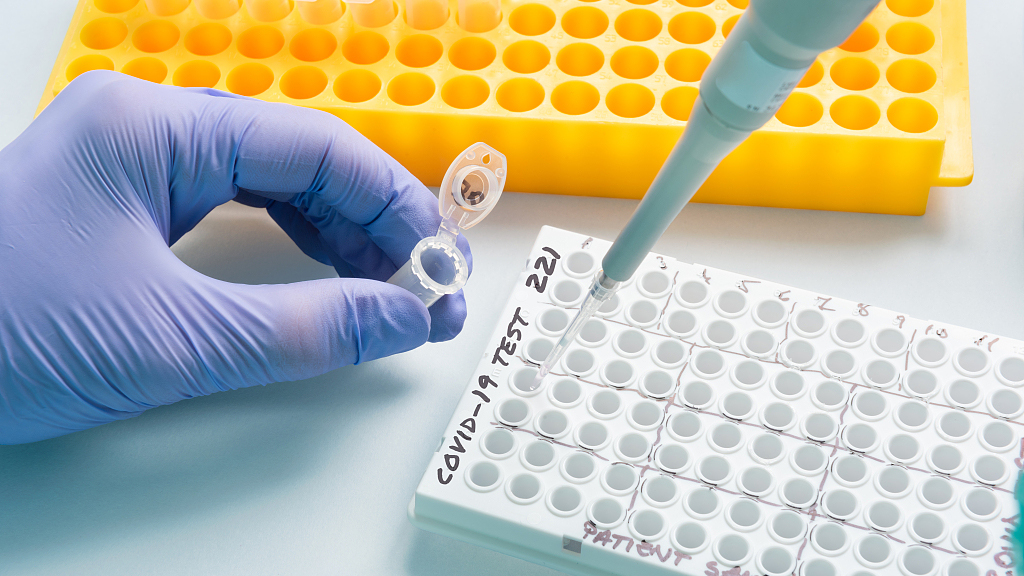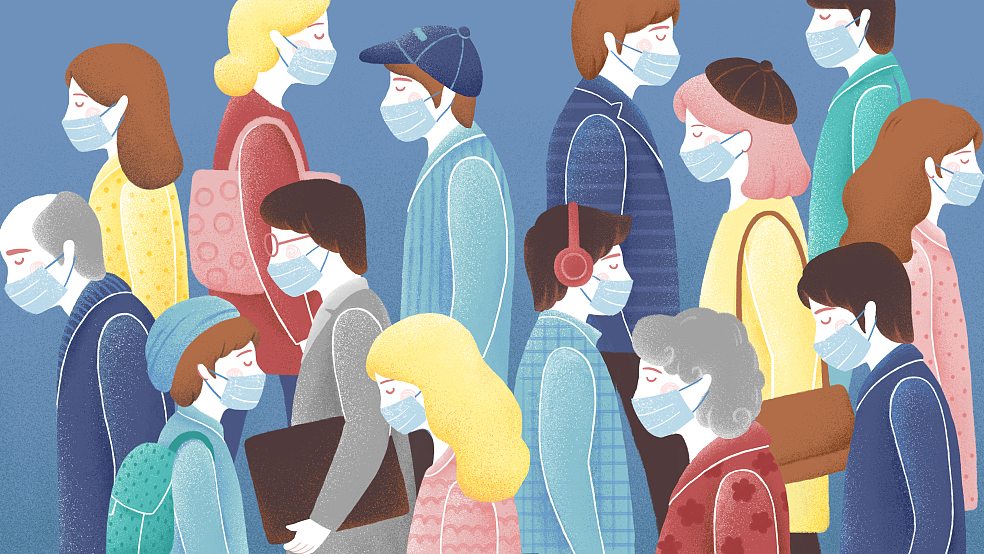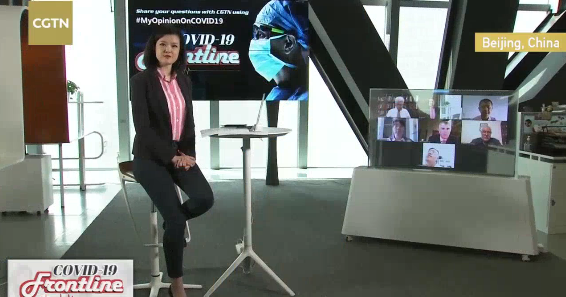Editor's note: On March 12, 2020, the World Health Organization (WHO) declared COVID-19 a pandemic, and as of Friday (June 12), about 200 countries and regions have confirmed over 7,273,958 cases, according to the WHO. On CGTN's live program "COVID-19 Frontline," we invited medical workers and experts from China and other parts of the world to share their experiences and take questions from social media, in the hope of providing more information for those who are battling against the pandemic.

In the latest episodes of CGTN's live stream program "COVID-19 Frontline" held on Friday, June 12, doctors from a Guangdong medical team that served in Wuhan shared their COVID-19 treatment experience with their counterparts from Latin American countries.
The number of COVID-19 infections in Latin America is quickly growing, with the death toll passing the grim milestone of 70,000. Mexico, Brazil and Argentina are currently in the peak phase with 129,184 cases confirmed in Mexico, 772,416 cases in Brazil and 25,987 cases in Argentina, according to the WHO.
Live: Doctors from China and Latin America exchange COVID-19 experience
The use of face masks
Alejandro Macias, infectious disease specialist and former Mexico influenza commissioner, said it was a little hard to convince people to use masks, but the rate of using face-masks in Mexico is increasing little by little. He asked about the situation in China and whether everybody wears mask.
Hu Guodong, deputy chief physician of Respiratory and Critical Care Medicine, Nanfang Hospital in China, said everyone in China wears mask. Wearing masks not only can prevent the spread of COVID-19, but also other respiratory diseases such as influenza and pneumonia.
Chen Ailan, chief of Department of Cardiology, the First Affiliated Hospital of Guangzhou Medical University, said many people objected to wearing a mask in January, especially older people. But several campaigns were set up to help people learn the importance of wearing masks. It is still the easiest and most reliable way to avoid the potential infection.

CGTN's live stream program "COVID-19 Frontline" held on Friday. /CGTN
CGTN's live stream program "COVID-19 Frontline" held on Friday. /CGTN
Screening tests for medical staff
Alejandro Macias also asked about how often do medical staff receive PCR test. Since medical staff contact a lot of patients and if they are asymptomatic, he or she can transmit the virus to a lot of people.
Hu Guodong said although the epidemic is well under control, the high level of protection is still necessary in the hospital. Doctors wear N95 masks and protective clothing to reduce the chances of being infected by asymptomatic persons. It also reduces the chance of infecting others.
Chen Ailan added that some taxi drivers, teachers have also received PCR test. In the process of resumption of work and production, everyone needs to get a temperature check in order to enter restaurants, hotels and commercial areas. Besides, COVID-19 contact tracing apps are used to track down people's contact history to avoid the spread of the virus.
11:15

Does China have herd immunity?
Emilio Puschmann, healthcare and technology entrepreneur in Brazil, asked about whether China has herd immunity.
Wu Jianfeng, chief of Critical Care Medicine, the First Affiliated Hospital of Sun Yat-sen University, answered that no city in China including Wuhan showed that herd immunity happened. 11 million residents of Wuhan got tested for antibodies, but the result shows the low level of immunity. The lack of herd immunity means Chinese people are still at high risk and are vulnerable to another wave of coronavirus. As of now, only one city in Italy is near herd immunity after 50 percent of its residents tested positive for COVID-19 antibodies. But the result needs to be further confirmed.
09:50

The experience of treating critical patients
Malaquias Lopez, professor of Public Health at the Faculty of Medicine, National Autonomous University of Mexico, wanted to learn more about Chinese doctors' experience on treating critical COVID-19 patients.
Wu Jianfeng, chief of Critical Care Medicine, the First Affiliated Hospital of Sun Yat-sen University, said the first is to prevent patients from developing from mild to severe and critical, which requires early screening, diagnosis and treatment. Because once the patient becomes critically ill, the mortality rate is very high. In his opinion, there is no essential difference between the principles of COVID-19 treatment and the treatment of previous acute respiratory distress syndrome once a patient has become critically ill. The main treatments include prone ventilation, organ support and extra-corporeal membrane oxygenation (ECMO) when necessary. He said a recent paper published by experts in Wuhan showed that ECMO cured as many as 50 percent of critically ill patients, suggesting that adequate medical resources were needed to ensure survival rate.

CGTN's live stream program "COVID-19 Frontline" held on Friday. /CGTN
CGTN's live stream program "COVID-19 Frontline" held on Friday. /CGTN
In later episodes of "COVID-19 Frontline," more frontline doctors and experts from Wuhan will join in to share their experience with their colleagues from other parts of the world. If you have any questions regarding COVID-19, you can share with us using #MyOpinionOnCOVID19 on Facebook.
Videos by Zhang Rongyi
Cover image by Du Chenxin